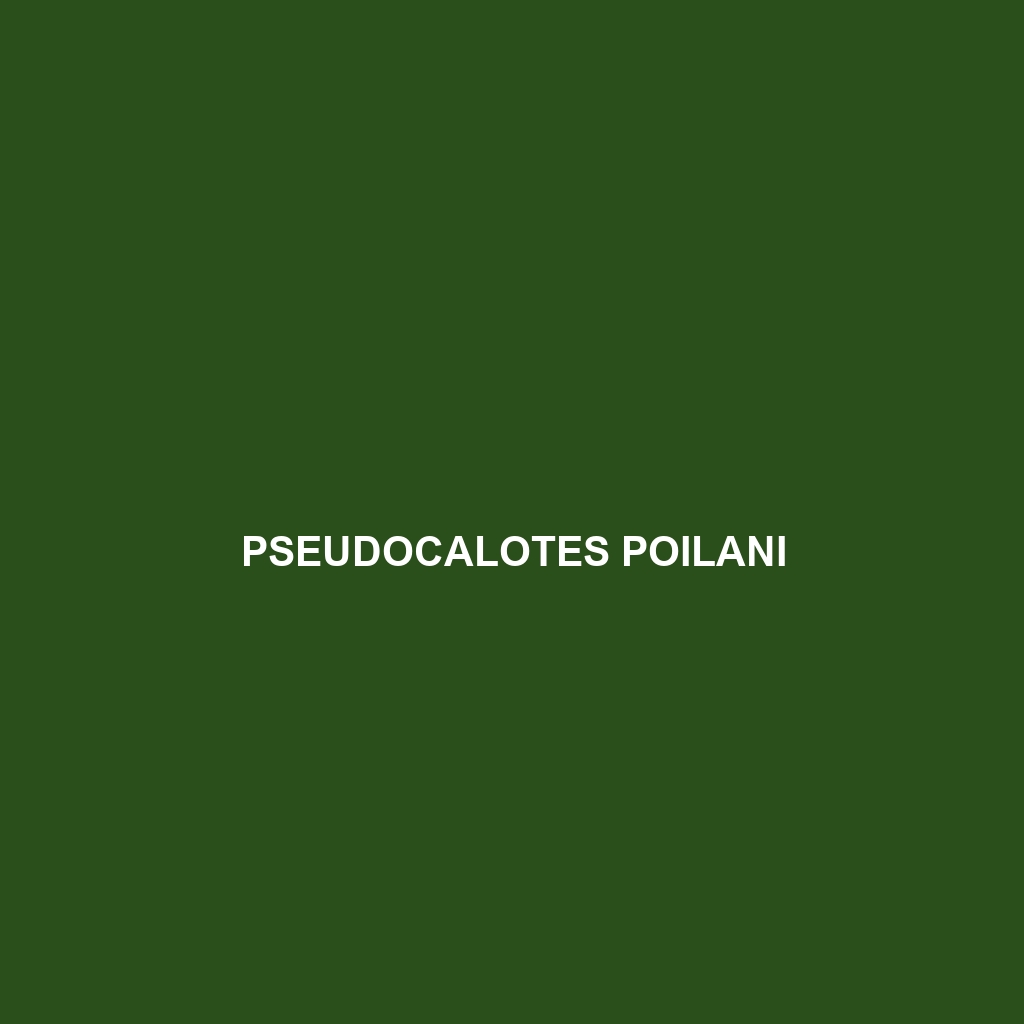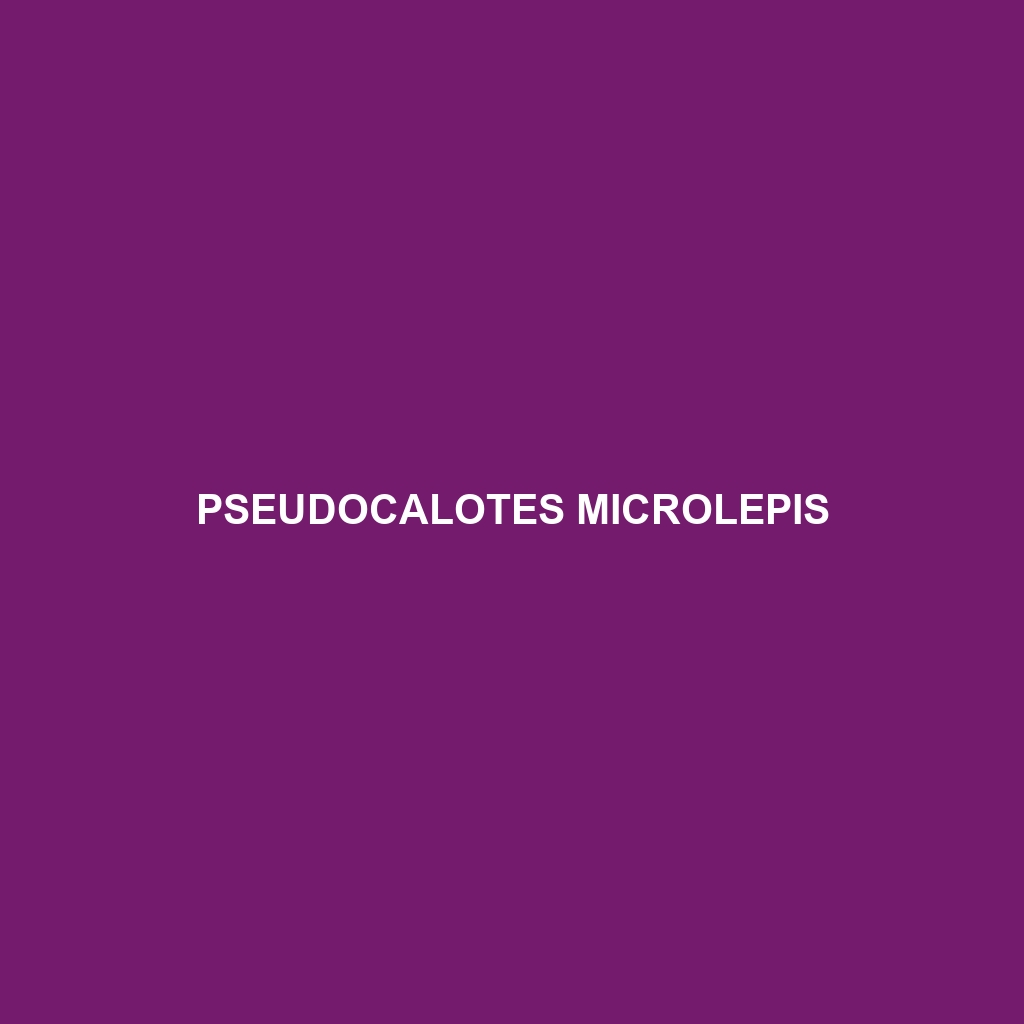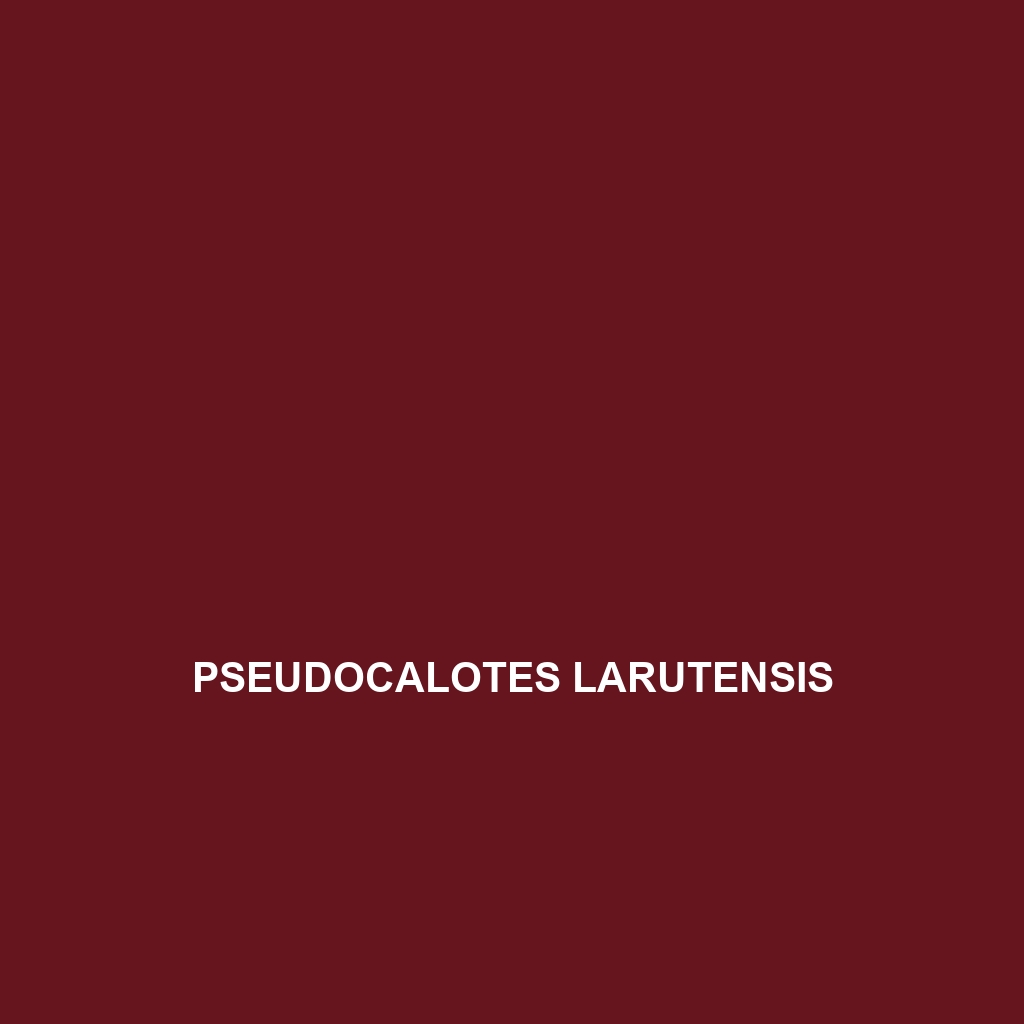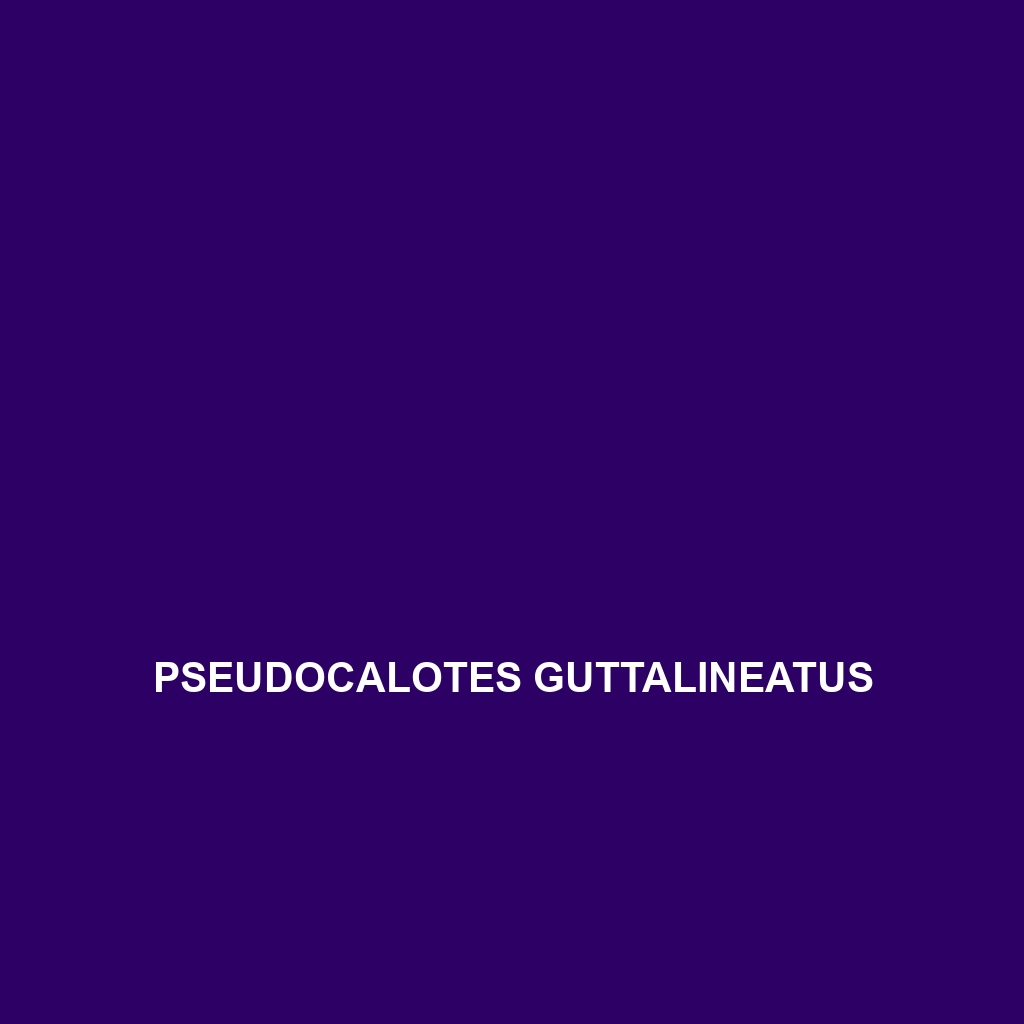Discover the vibrant and agile Pseudocalotes poilani, a stunning lizard native to Southeast Asia's tropical rainforests. Recognized for its ability to change coloration and its role as a vital insectivore, this species thrives in humid environments, making it essential for maintaining ecological balance.
Category: Uncategorized
Pseudocalotes microlepis
<p><b>Pseudocalotes microlepis</b>, known as the Microlepis Flying Lizard, is a striking insectivore found in Southeast Asia's rainforests, characterized by its gliding ability, vibrant coloration, and elongated body reaching up to 20 cm. This species plays a vital ecological role in pest control and pollination, thriving in tropical climates while facing habitat loss challenges.</p>
Pseudocalotes larutensis
<span><b>Pseudocalotes larutensis</b>, or the Larut Hill lizard, is a vibrant, insectivorous reptile native to the montane rainforests of Malaysia, characterized by its distinct spiny dorsal crest and diurnal foraging behaviors. This vulnerable species plays a crucial role in regulating insect populations and contributes to the ecosystem's biodiversity.</span>
Pseudocalotes kingdonwardi
<b>Pseudocalotes kingdonwardi</b>, known as Kingdon-Ward’s Lizard, is a colorful insectivorous lizard native to the humid montane forests of Southeast Asia. With vibrant hues, robust limbs for climbing, and a unique ability to change color for camouflage and communication, this species thrives at elevations between 1,500 to 2,500 meters.
Pseudocalotes kakhienensis
<b>Pseudocalotes kakhienensis</b>, commonly known as the Kakhien Ridge Lizard, is a vibrant insectivorous lizard found in the mountainous forests of Southeast Asia, characterized by its slender frame, prominent dorsal crest, and ability to slightly change color for camouflage. This diurnal species plays a crucial role in controlling insect populations and is currently listed as vulnerable due to habitat loss from deforestation and agricultural expansion.
Pseudocalotes khaonanensis
<b>Pseudocalotes khaonanensis</b>, known as the Khao Nan lizard, is a vibrant insectivore found in the rainforests of Southeast Asia, characterized by its striking green scales and impressive climbing abilities. This diurnal species plays a vital role in controlling insect populations and serves as both predator and prey within its rich ecosystem.
Pseudocalotes jingpo
<b>Pseudocalotes jingpo</b>, also known as the Jingpo lizard, is a vibrant insectivorous species native to the tropical rainforests of Southeast Asia, characterized by its impressive color-changing abilities and agile climbing skills. This moderate-sized lizard plays a crucial role in its ecosystem by regulating pest populations and contributing to plant diversity through seed dispersal.
Pseudocalotes floweri
<p><b>Pseudocalotes floweri</b>, commonly known as the Flower's Lizard, is a vibrant insectivorous species native to the tropical rainforests of Southeast Asia, recognized for its colorful appearance and unique crest. This diurnal lizard plays a vital role in local ecosystems by controlling insect populations and serves both as predator and prey within its habitat.</p>
Pseudocalotes guttalineatus
The <b>Pseudocalotes guttalineatus</b>, or lined tree lizard, is a striking, arboreal species native to Southeast Asia, exhibiting vibrant color variations and unique adaptations for navigating its tropical rainforest habitat. As a primarily insectivorous lizard, it plays a crucial role in its ecosystem, controlling insect populations and serving as prey for larger animals.
Pseudocalotes flavigula
Introducing the Pseudocalotes flavigula, a stunning Southeast Asian lizard known for its distinctive yellow throat and elongated, slender body reaching up to 30 cm. This diurnal insectivore thrives in tropical rainforests, showcasing unique social behaviors and vital roles in maintaining ecological balance.







